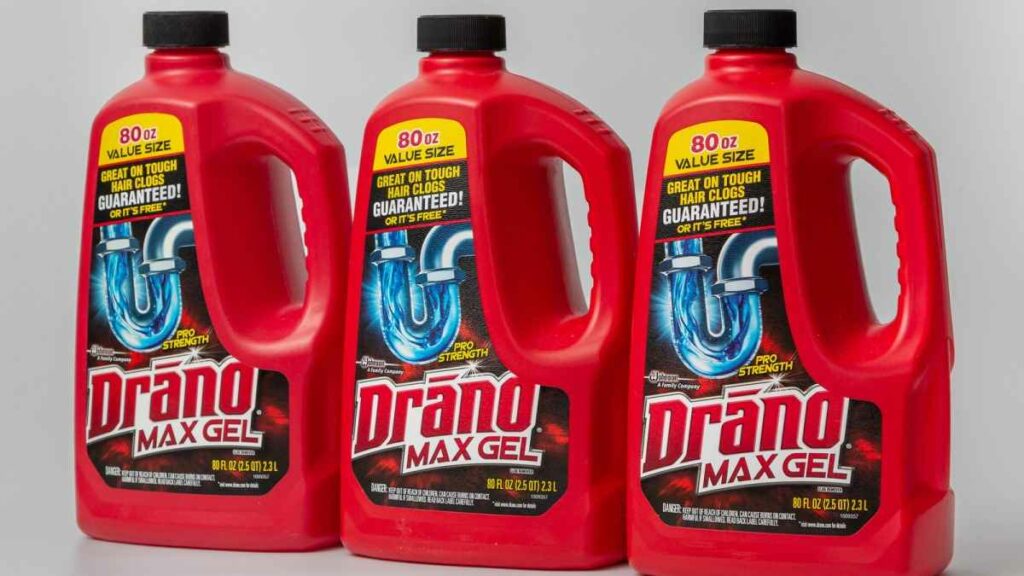Yes, you can use Drano in a kitchen sink to unclog drains caused by food waste, grease build-up, or soap scum.
Drano products are safe for both plastic and metal pipes.
For a kitchen sink without garbage disposal, use Drano Kitchen Granules Clog Remover, which creates heat to melt and dislodge greasy clogs.
If your sink has a garbage disposal, you can use Drano Max Gel Clog Remover or Drano Dual-Force Foamer Clog Remover.
However, do not use Drano products in toilets, as they can be abrasive and harmful to the plumbing pipes.
Are There Any Specific Safety Precautions To Take When Using Drano In A Kitchen Sink?
Yes, there are specific safety precautions to take when using Drano in a kitchen sink.
According to the Drano website, users should keep their hands, faces, and children away from drains while using Drano drain openers.
Additionally, users should never use a plunger during or after the use of Drano drain openers because Drano may still be present if the drain did not clear.
Drano should not be used in toilets.
For slow-running toilets, users should use Drano Max Build-Up Remover.
It is also important to wear personal protective equipment and wash thoroughly after handling Drano.
Finally, it is recommended to avoid using Drano in garbage disposals.
How Long Should I Leave Drano In The Kitchen Sink Before Flushing It With Water?
According to Drano’s website, for clogged or slow-running drains, apply the product and let it work for 15 minutes, then flush it with hot water.
For tough problems, allow 30 minutes before flushing.
Can Drano Be Used As A Preventive Measure To Avoid Clogs In The Kitchen Sink?
Drano offers a product called Drano Max Build-Up Remover that contains natural enzymes and bacteria to help prevent clogs from forming in pipes.
This product is designed to be used on a monthly basis as a preventive measure to keep drains running smoothly and prevent clogs from forming.
Additionally, Drano recommends pouring a kettle of hot water down the kitchen sink drain once a week to melt away any fat or grease that may have been collected inside the pipes.
In case of clogs, Drano Kitchen Granules Clog Remover can be used to help the kitchen sink drain flow smoothly.
However, it is important to note that while Drano may work to clear a clogged sink, it may only act as a temporary fix if there are more serious problems with the plumbing.
Plumbers generally do not recommend using Drano as it can cause damage to pipes and fixtures.
Are There Any Alternative Products Or Methods To Unclog A Kitchen Sink Apart From Using Drano?
Yes, there are alternative products and methods to unclog a kitchen sink apart from using Drano.
Here are some suggestions:
- Use baking soda and vinegar: Pour one cup of baking soda down the drain, followed by one cup of white vinegar. Cover the drain and wait for 15 minutes before flushing it with hot water.
- Use boiling water: Boil water and pour it down the drain to loosen the clog.
- Use a plunger: Remove the drain cover and place the plunger over the drain. Pump the plunger up and down vigorously for up to half a minute.
- Use a wire coat hanger: Straighten a wire coat hanger and insert it into the drain to dislodge any food or hair buildup that is clogging the passageway in the pipe.
- Use dish soap and hot water: Boil two litres of water and mix in a few tablespoons of liquid dish soap. Pour the mixture slowly down the sink.
What Should I Do If Drano Doesn’t Unclog My Kitchen Sink?
If Drano doesn’t unclog your kitchen sink, there are several other methods you can try.
One option is to use a mixture of baking soda and vinegar.
Pour one cup of baking soda down the drain, followed by one cup of white vinegar.
Cover the drain and wait for 15 minutes before running hot water down the drain to clear the clog.
Another option is to use a plunger to dislodge the clog.
Place the plunger over the drain and apply pressure to create a seal.
Then, push and pull the plunger to create suction and dislodge the clog.
If these methods don’t work, you can try using a drain snake or auger to break up the clog.
Additionally, you can prevent clogs by avoiding putting certain items down the drain, such as grease, fibrous foods, and starchy foods.







